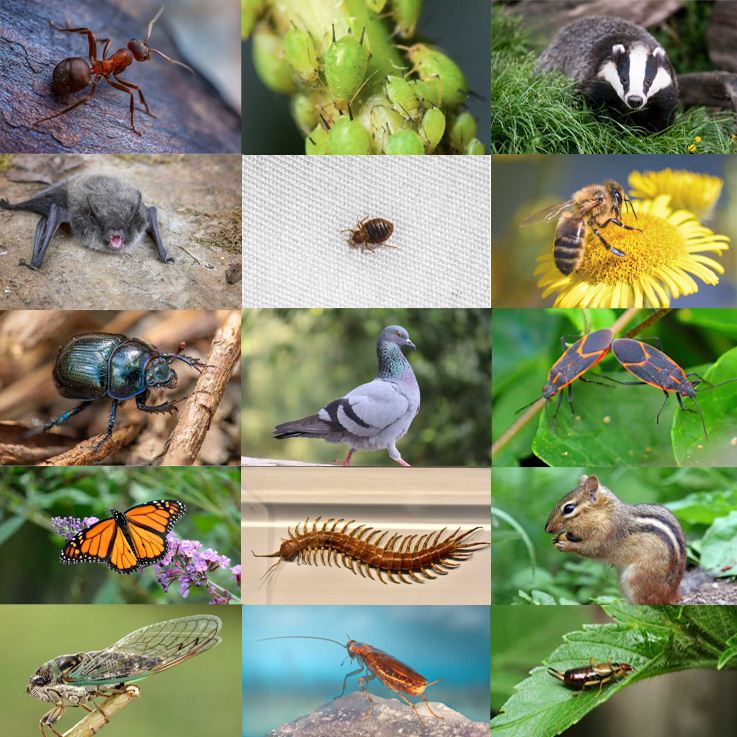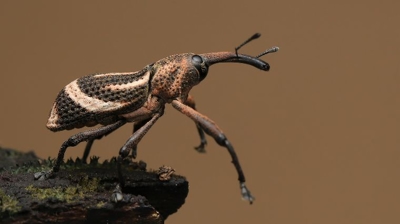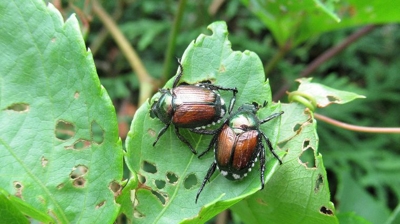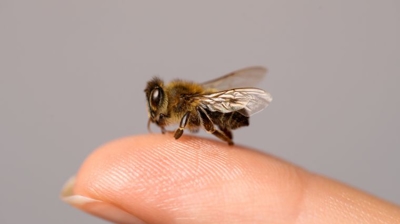
Sprickets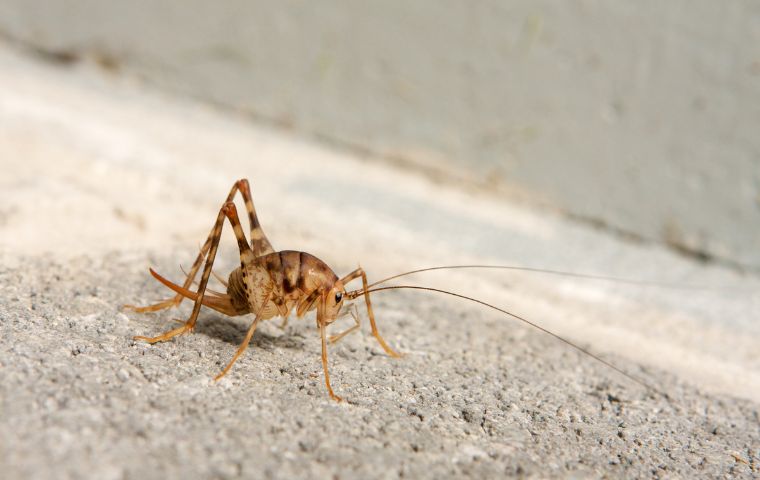
What Are Spider Crickets?
Spider crickets, also known as camel crickets, cave crickets, or sprickets, are arachnid-like insects belonging to the family Rhaphidophoridae. They are not true crickets, as they lack the ability to chirp like the typical cricket. These peculiar insect pests are often found in dark, damp, and cool environments, such as basements, caves, and crawl spaces. Here's an overview of spider crickets:
- Physical Characteristics: Spider crickets are characterized by their unusual appearance. They have long hind legs, similar to those of a spider, which they use for jumping and escaping predators. They are typically brown or tan, with a humpbacked body and antennae. Their body can range from 1/2 to 1 1/2 inches in length, depending on the species.
- Habitat: Spider crickets prefer dark, moist, and cool habitats. They are often found in basements, cellars, and other areas with high humidity levels. These insects are also known to inhabit caves, hence the name "cave cricket."
- Diet: Spider crickets are herbivorous and primarily feed on decaying plant matter, fungi, and organic debris. They are scavengers, playing a role in breaking down organic material.
- Behavior: Spider crickets are nocturnal and are more active during the night. They are agile jumpers, using their long hind legs to escape from threats. When disturbed, they may leap unexpectedly, which can startle homeowners who encounter them.
- Reproduction: Female spider crickets lay their eggs in the soil. The eggs hatch into nymphs, which go through several molts before reaching adulthood. The lifespan of a spider cricket can vary, with some living up to a year or more.
- Notable Traits: Spider crickets are often considered pests by homeowners because of their presence in indoor environments. They do not bite humans, but their jumping behavior and strange appearance can be unsettling. Additionally, they are not known to cause structural damage to buildings or crops.
- Control and Prevention: To manage spider cricket infestations, it's essential to reduce moisture levels in the affected area, seal cracks and crevices in walls and foundations, and use dehumidifiers to make the environment less favorable for them. In some cases, chemical treatments may be necessary, and it's best to consult with a pest control professional.
Spider crickets are intriguing insects with distinctive characteristics. While they might be unwelcome houseguests due to their appearance and behavior, they are not dangerous to humans and primarily serve as decomposers in the ecosystem. Understanding their biology and habits is essential for effective control and prevention measures in homes where they are present.
Are Spider Crickets Dangerous?
Spider crickets, also known as camel crickets or cave crickets, are generally not considered dangerous to humans in the same way that some other pests or insects can be. However, they can still be a nuisance and pose some indirect issues. Here are several ways in which spider crickets might be considered problematic:
- Unsettling Appearance: Spider crickets have a distinctive and sometimes unsettling appearance due to their humpbacked body, long antennae, and spider-like legs. Their appearance can startle or cause discomfort for some people who encounter them in their homes.
- Jumping Behavior: When disturbed, spider crickets are agile jumpers and can leap unexpectedly. This jumping behavior can surprise and potentially frighten homeowners, especially in dark areas where they are prevalent.
- Nuisance Pest: Spider crickets are often considered pests in homes because of their presence in basements, crawl spaces, and other indoor areas. Their numbers can increase rapidly if the conditions are suitable, leading to an infestation that homeowners find bothersome.
- Indoor Infestations: In large numbers, spider crickets can damage items stored in basements, cellars, or garages, as they may chew on cardboard, paper, fabric, or even plants. While they are not known to cause structural damage to buildings, they can still be destructive to stored items.
- Allergies and Asthma: While spider crickets themselves are not known allergens or disease vectors, their presence in damp areas can contribute to mold growth. Mold can trigger allergies and exacerbate asthma symptoms in sensitive individuals.
- Secondary Pest Issues: Their presence in homes may attract other pests, such as spiders, centipedes, or certain rodents that prey on them. This can lead to a cascade of pest problems in the household.
- Escape Behavior: Due to their ability to jump, spider crickets can be challenging to catch and remove from indoor areas. Their agility can make it difficult to control their population if an infestation occurs.
While spider crickets can be unsettling and troublesome, they are not known to bite humans, transmit diseases, or cause direct harm. If their presence becomes a concern, it's advisable to take measures to reduce moisture levels in the affected area, seal entry points, and consult with a pest control professional if necessary. Additionally, maintaining a clean and clutter-free space can help deter these insects from settling in your home.
While spider crickets can be unsettling and troublesome, they are not known to bite humans, transmit diseases, or cause direct harm. If their presence becomes a concern, it's advisable to take measures to reduce moisture levels in the affected area, seal entry points, and consult with a pest control professional if necessary. Additionally, maintaining a clean and clutter-free space can help deter these insects from settling in your home.
Learn more: Do Spider Crickets Bite?
What Do Spider Crickets Look Like?
Spider crickets, also known as camel crickets or cave crickets, have distinct physical features that set them apart from typical crickets. Here is what spider crickets look like:
- Body Shape: Spider crickets have a unique and somewhat unsettling appearance. They have a humpbacked or arched body, which is quite different from the flattened body shape of traditional crickets. This humpbacked appearance can make them resemble a spider, hence the name "spider cricket."
- Size: Spider crickets vary in size, but they generally measure between 1/2 inch to 1 1/2 inches in length. The exact size may depend on the species and environmental factors.
- Color: They are typically brown or tan, with variations in coloration. Their coloring helps them blend into their natural habitat, which often includes dark and damp environments.
- Antennae: Spider crickets have long and slender antennae, which they use to sense their surroundings. These antennae are in proportion to their body size.
- Legs: One of the most distinctive features of spider crickets is their long, powerful hind legs. These legs are adapted for jumping and are similar in appearance to those of a spider. Their jumping ability is used as a defense mechanism to escape from threats.
- Wings: Unlike traditional crickets, spider crickets do not have wings, and they are unable to chirp. This is another key difference between the two insect groups.
- Eyes: Their eyes are relatively small and less prominent compared to their antennae. Spider crickets primarily rely on their sense of touch and smell rather than sight.
- Cerci: Spider crickets have two long, slender structures at the rear of their abdomen called cerci. These cerci are used for sensory perception and balance.
- Mouthparts: They have chewing mouthparts that they use to feed on decaying plant matter and organic debris, which is their primary source of food.
Spider crickets are recognizable by their distinctive humpbacked body, long hind legs, and spider-like appearance. Their coloration and body structure make them well-suited for their preferred habitat, which is often dark, damp, and cool environments such as basements and crawl spaces. Understanding their physical characteristics can help homeowners identify them when encountered in their living spaces.
Where Are Spider Crickets Found?
Spider crickets, also known as camel crickets or cave crickets, are typically found in specific environments that provide the conditions they need to thrive. These insects are often associated with dark, damp, and cool places. Here are some common locations where you might find spider crickets:
- Basements: Basements are one of the most common places to encounter spider crickets, especially if the area is damp and has a relatively high humidity level. They tend to hide in dark corners, under boxes, or behind stored items.
- Cellars: Similar to basements, cellars provide a suitable habitat for spider crickets due to their cool and often moist conditions.
- Crawl Spaces: Spider crickets are frequently found in crawl spaces beneath houses. The moisture in these areas, along with the darkness, creates an ideal environment for them.
- Garages: Garages can also be home to spider crickets, especially if there are moisture issues, such as water seepage, or if the garage is seldom used and lacks ventilation.
- Sheds and Outbuildings: Outdoor sheds and storage structures with damp or cool conditions can attract spider crickets.
- Under Porches: The space beneath porches can provide the right environment for spider crickets to thrive, especially if the area is shaded and experiences high humidity.
- Wooded Areas: In outdoor settings, spider crickets can be found in wooded areas, leaf litter, and forested regions, as these places offer the darkness and moisture they prefer.
- Caves: In their natural habitat, spider crickets are often found in caves, which is one reason they are sometimes called "cave crickets."
The presence of spider crickets indoors can be unsettling to homeowners due to their appearance and jumping behavior. While they are not known to cause structural damage to buildings, they can be considered a nuisance in homes, particularly if their population becomes too large. If you're dealing with a spider cricket issue, it's advisable to take measures to reduce moisture levels in the affected area, seal entry points, and, if necessary, consult with a pest control professional for effective control and prevention strategies.
What Do Spider Crickets Eat?
Spider crickets, also known as camel crickets or cave crickets, are herbivorous insects with a diet primarily focused on consuming decaying plant matter and organic debris. Here is what spider crickets eat:
- Decaying Plant Material: Spider crickets are scavengers that play an essential role in breaking down dead and decaying plant material. They feed on fallen leaves, rotting wood, and other plant debris found on the forest floor or in dark, damp environments.
- Fungi: These insects are known to consume various types of fungi. Fungi often grow on decaying organic matter, and spider crickets are adapted to exploit this food source.
- Algae: In some cases, spider crickets may feed on algae, especially if it's present in their environment. Algae can grow in damp, shaded areas, making it accessible to these insects.
- Moss: Spider crickets might also graze on mosses and other low-lying vegetation found in their habitat.
- Other Organic Debris: Along with their primary diet of plant material, spider crickets may consume other forms of organic debris, such as dead insects or small carrion.
Spider crickets are not known to be predatory, and they do not feed on live plants or prey on other insects. They are considered detritivores, which means they help decompose and recycle decaying plant matter, contributing to nutrient cycling in their ecosystem.
In home environments, spider crickets may be attracted to basements, crawl spaces, and other dark, damp areas due to the availability of organic debris and the moisture content. While they are not harmful to humans, their presence can be unsettling, and homeowners often take steps to reduce moisture levels and eliminate potential food sources to deter these insects from entering their living spaces.
What Is The Life Cycle Of Spider Crickets?
The life cycle of spider crickets, also known as camel crickets or cave crickets, consists of several stages, from egg to adulthood. While specific timing and details can vary among species and environmental conditions, here is an overview of their typical life cycle:
Egg Stage:
- The life cycle begins with the female spider cricket laying eggs. These eggs are usually deposited in soil or other suitable substrate. The female may lay a cluster of eggs in one location.
- The eggs are often whitish or translucent and can be quite small, measuring around 1-3 mm in length.
- The exact number of eggs laid and the time it takes for them to hatch depend on factors like temperature and humidity.
Nymph Stage:
- When the eggs hatch, spider crickets emerge as nymphs. Nymphs are miniature versions of adult spider crickets but lack fully developed wings and reproductive organs.
- Nymphs go through several molting stages, shedding their exoskeleton as they grow. Each molt results in a larger, more developed nymph.
Growth and Development:
- The nymphs feed on decaying plant matter, fungi, and organic debris during this stage.
- As they continue to molt and grow, they gradually develop adult characteristics, including the humpbacked body shape and long hind legs.
Adult Stage:
- Once the nymphs have undergone enough molts and reach a certain size, they enter the adult stage.
- Adult spider crickets have fully developed wings and reproductive organs.
- The lifespan of an adult spider cricket can vary, with some individuals living up to a year or more, depending on factors such as environmental conditions and availability of food.
Reproduction:
- Adult spider crickets are capable of mating and reproducing. The female lays eggs, starting the cycle over again.
- Spider crickets are prolific breeders, and their populations can increase rapidly if environmental conditions are suitable.
The entire life cycle of spider crickets can take several months to complete, with variations depending on factors like temperature, humidity, and food availability. Spider crickets are adaptable insects, and their life cycle allows them to thrive in environments with decaying organic matter, such as basements, cellars, and other dark, damp locations. Understanding their life cycle can be helpful for implementing control and prevention strategies if they become a nuisance in your home.

Hear From Our Happy Customers
-
"Fantastic & Patient"
Jarvis was fantastic and patient. He answered my questions with an in-depth explanation and addressed all of my areas of concern. Would love for him to be my assigned tech going forward. Well done!
- Yonnette M. -
"Wonderful Service"
Wonderful service. Jarvis is great. Took care of everything I needed. Thank you!
- Henry P. -
"Very Knowledgeable"
The tech that arrived was courteous, professional, and very knowledgeable. He was Great.
- Uerial I. -
"Exceeds Expectations"
I can’t say enough positive things about this company... The tech that came out, Jarvis went above and beyond my expectations. Thank you guys, I will continue using your services.
- Jake M. -
"Professional & Considerate"
I’m pleased with Miche services. Jarvis came today. Professional and considerate. Thank you!
- Judy B. -
"Great Communication"
Tech was on time, communication was great, and he accommodated my needs.
- Alonzo W.

